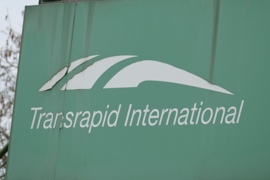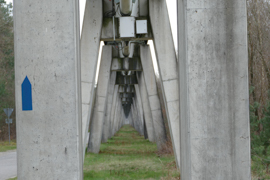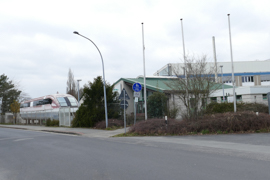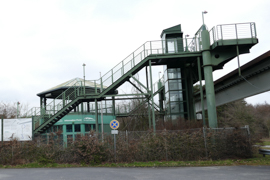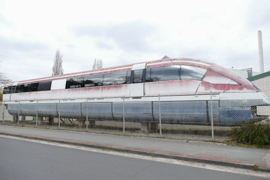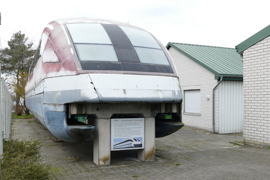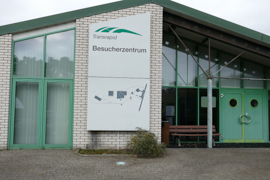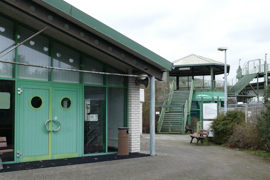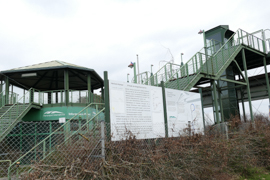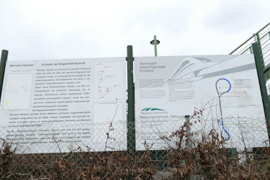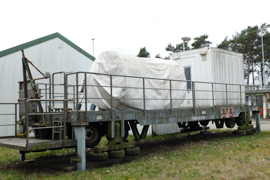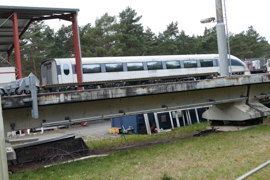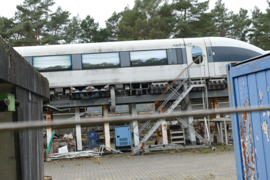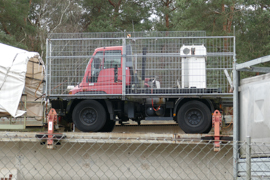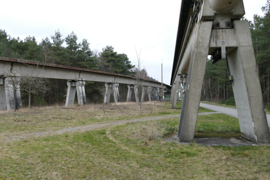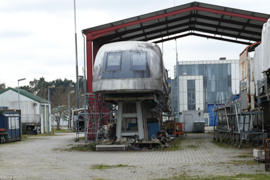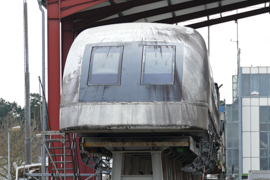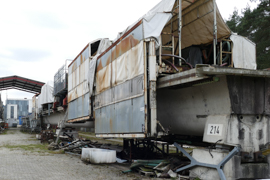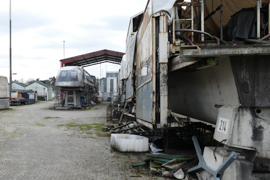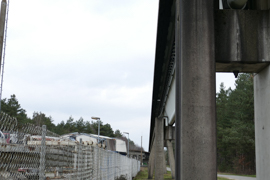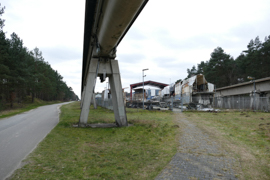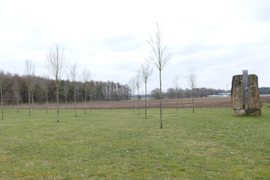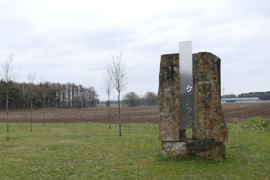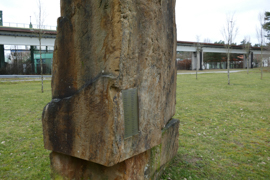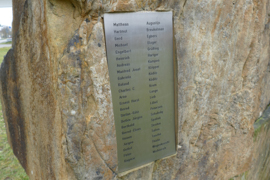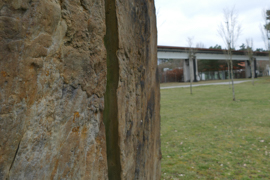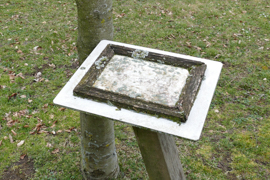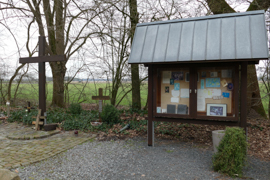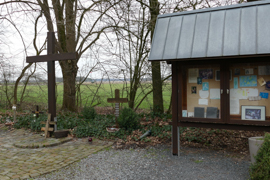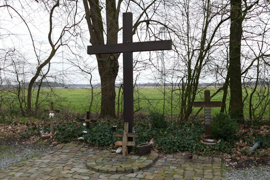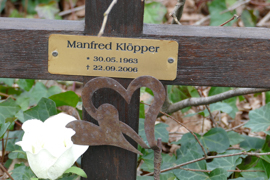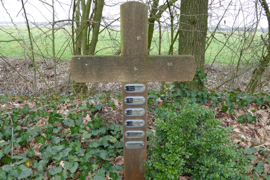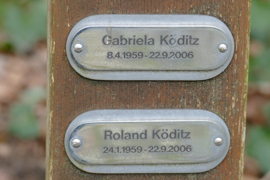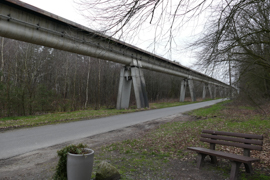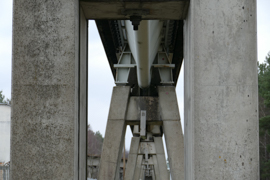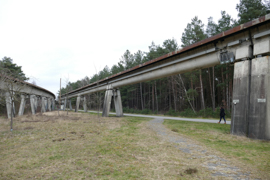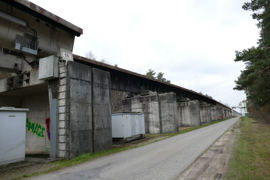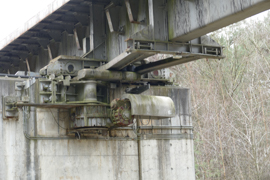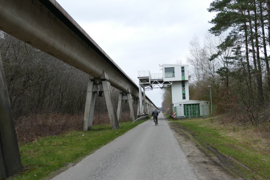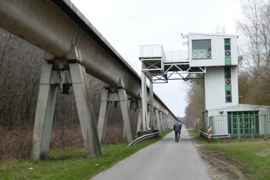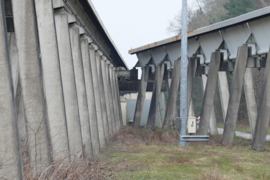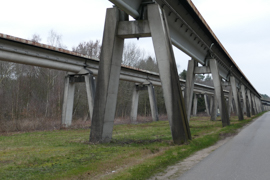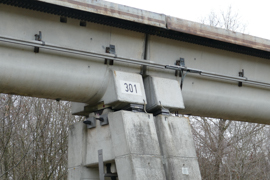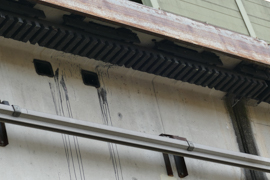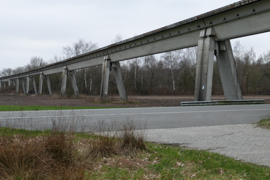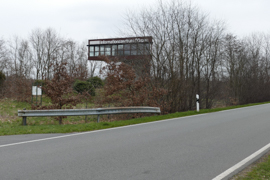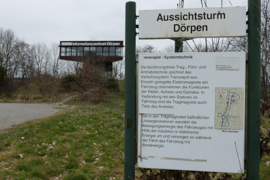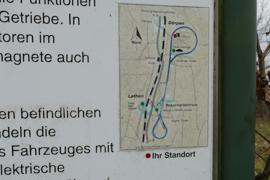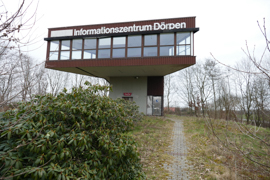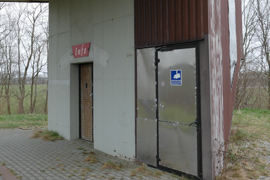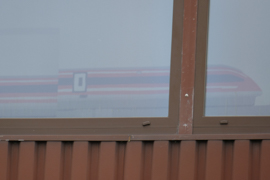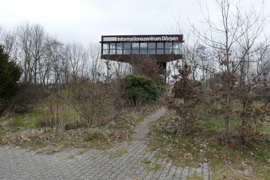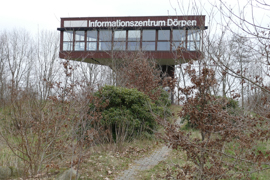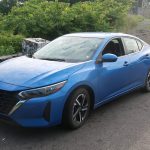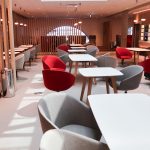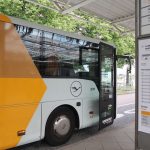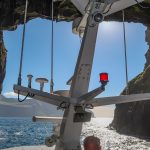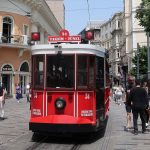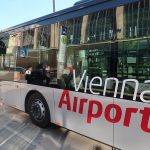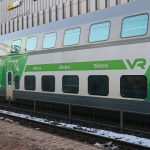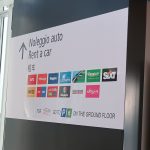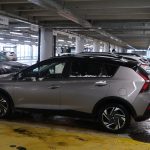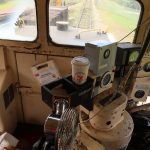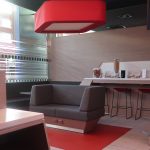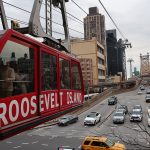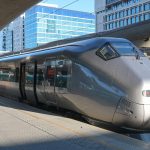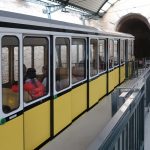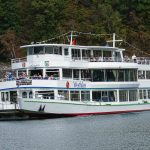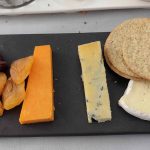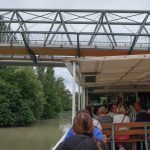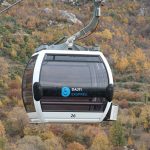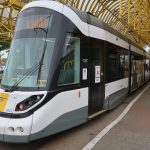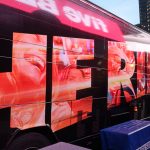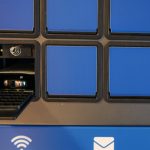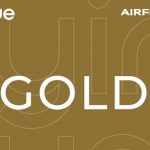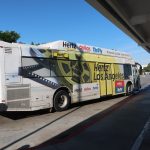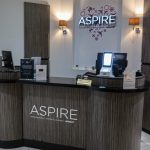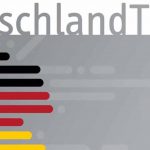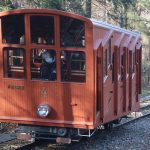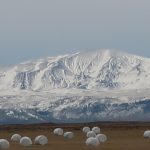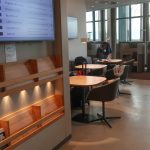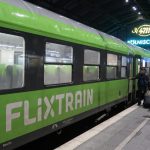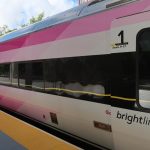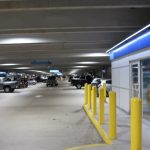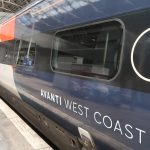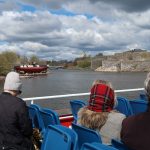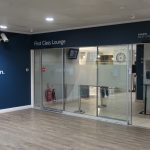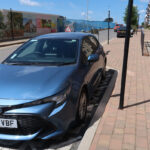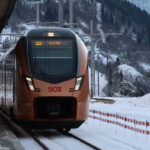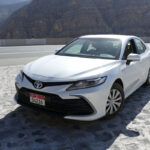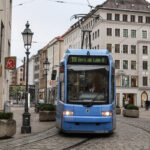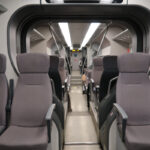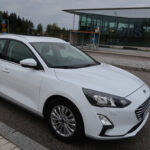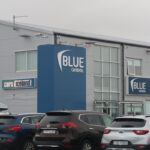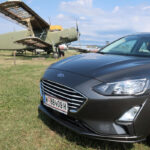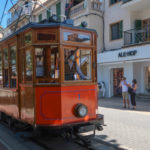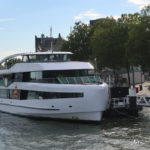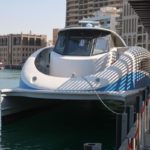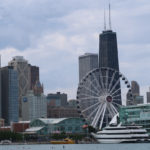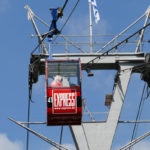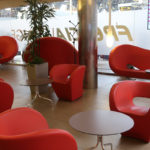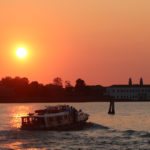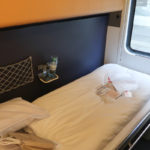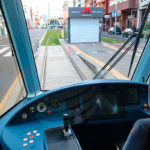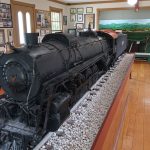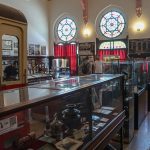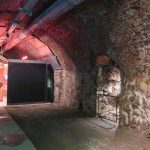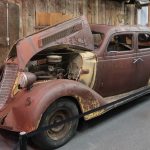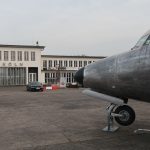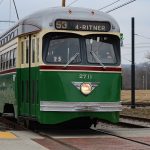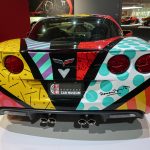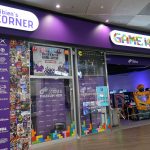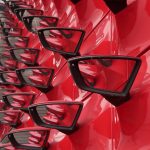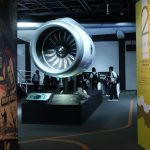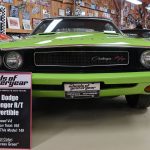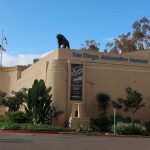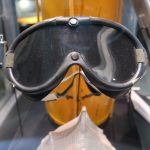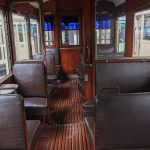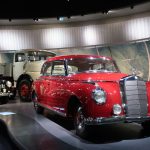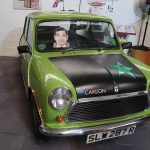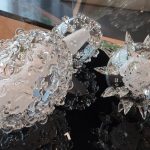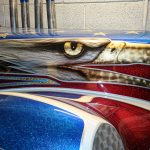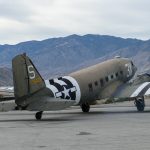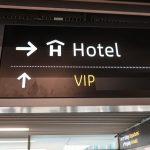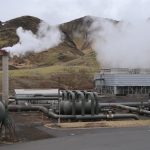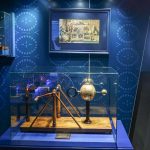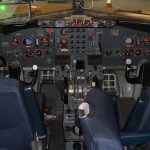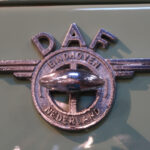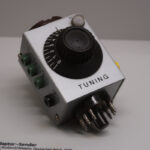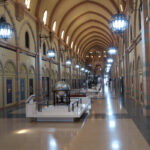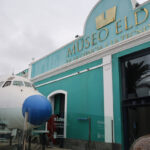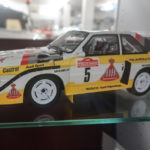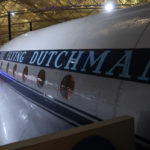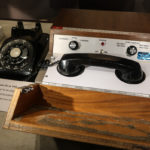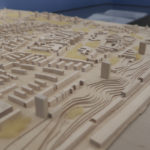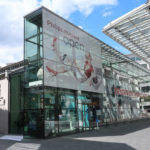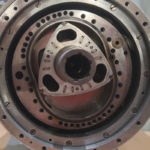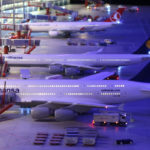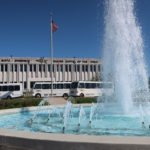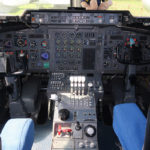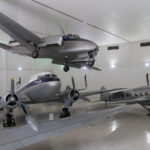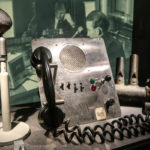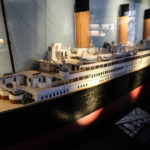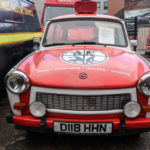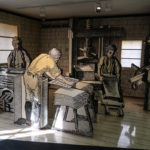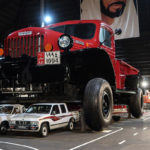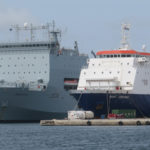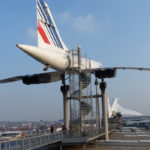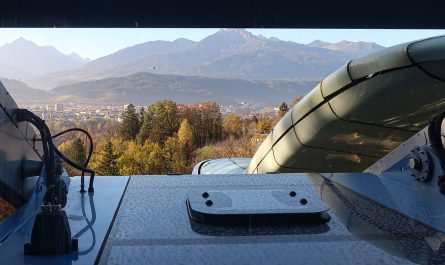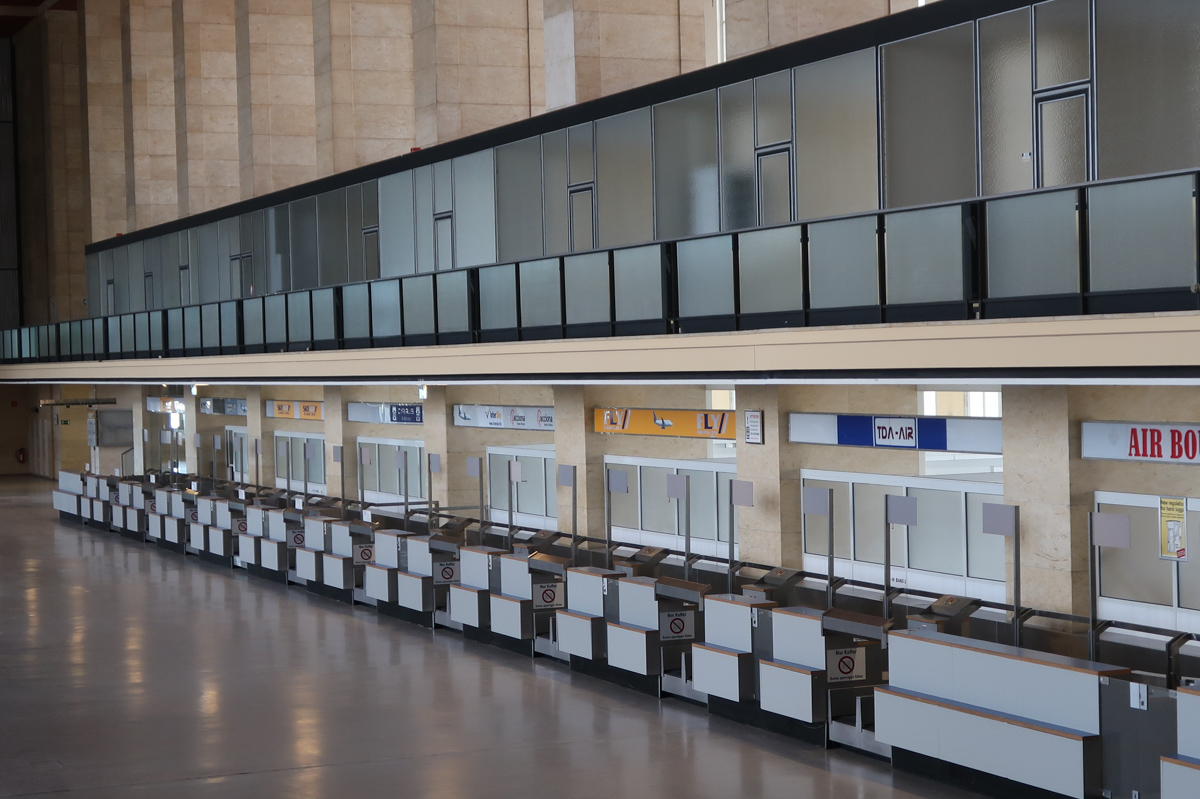Magnetic levitation is such a fascinating technology – and even though the German Transrapid project is no longer followed, it still holds the speed record for a train-alike mass transport vehicle over German ground. In June 1993, the maglev reached 450 kph. Even though a lethal accident stopped all maglev testing in the German Emsland region, the tracks and sites are still existing. In spring 2021, I explored the tracks called Transrapid-Versuchsanlage Emsland (Transrapid Emsland Test Grounds) together with my wife.


Transrapid – Some Historic Facts
The Transrapid technology is a German development in collaboration of Siemens and ThyssenKrupp companies. The very first steps of the state-funded project were already in the late 1960’s. In 1991 the Transrapid was regarded to be ready to be ready to be used practically. However, all German projects – the most prominent one is likely an improved connection between Munich city center and the airport, have been stopped during development. The only working Transrapid technology is the Transrapid SMT in Shanghai, China. Based on that technology, China is planning to build an improved maglev currently named CRRC 600.
A Lethal Accident in 2006
The (overall) fail of the technology has multiple reasons. A key one is the improvement of high speed rail systems in the meantime. Without a doubt, the deadly accident on 22nd September 2006 was one of the last reasons to stop projects. The test track in the Emsland was also a tourist attraction. A group of visitors had a morning ride on that day, all of them were invited to that right for various reason. While the maglev completed all tests and started the typical ten minute ride, a maintenance car was still on the track and did not get permission to leave it to the depot. 23 people were killed. The reason has been human failure, majorly by the dispatcher of the track.
Test Track Closed in 2011
There have been test rides with later Transrapid generations, but overall, the test track has been closed in 2011. It should have been dismantled in 2012 already, but there are various options how to use that track, e.g. for Hyperloop technology testing. The switches at each oval and in order to reach the depot are still working, some electric connections have been removed, though. In general, it is still possible to purchase Transrapid trains and infrastructure for active usage. One of the most prominent options is likely the maglev connection of Pittsburgh Airport.
Former Transrapid Test Track – Location
The Transrapid Test track has a total length of 31.8 kilometers. It has one straight, which has been used in either direction and loops on the North side and the South side of the track, which roughly operates between the cities Dörpen and Lathen. The most prominent cities nearby are Meppen and Papenburg. The whole track is still existing, there are, however, some parts which cannot be accessed by car. The road parallel to the straights of the track is not allowed for traffic, but used by the locals frequently.
The key marker on the map above is the former visitor center, which is located at the former depot. The memorial site for the Transrapid crash is located right at the other side of the track – the original location is however further North of the memorial (see below). I also marked the Information Center in Dörpen, which you can spot on the pictures below. You can also visit the Besucherhügel (visitors hill) close to the Northern switch of the track, where you had a great view of the train twice .
Transrapid – Former Visitor Center & Depot
If you look at the former visitor center from outside, you could feel that it is still operating. The signs around are still there (but look a bit of rusty), the platform, with which you could board Transrapid trains is still existing. The most obvious catch that something is wrong here is likely the rotten Transrapid train in front, which lost quite a bit of its (I guess, at least) red livery. It is one section of the Transrapid 07, the other one is located at the Max Bögl company grounds in Sengenthal. An interesting fact is that apart from the crashed section of the Transrapid 06, only Transrapid 03 has been scraped. All other trains are still existing, some in museums some in locations like the one in Lathen. I saw Transrapid trains in front of the Deutsches Museum Bonn or at the Technikmuseum Speyer.









If you walk around the corner, you still see the former depot. The train shed is nowadays used by a development project for inductive charging of electric cars, so that it is still in use. They were happy to get rid of their last operational and good condition Transrapid trains a few years ago. Unfortunately, I got the information too late that this train still exists and is located not too far away. The family of the main inventor of the maglev technology, Hermann Kemper, is also big in meat processing – and thus, this last Transrapid train, the Transrapid 09, is now located in front of their meat packing plant in Nortrup.
Part of the original crashed train still in depot
The most impressive thing you see is one end section section of a Transrapid train – which is in fact the E2 end of the Transrapid 08 train which crashed in 2006. The middle section is still existing as well, but not visible. You also see a lot of maintenance material, like the maintenance cars involved in the 2006 crash. The area is not accessible, of course – but you got a good view from outside.













Transrapid – Memorials
The “official” memorial for the 23 victims of the 2006 Transrapid crash is located right opposite of the visitor center. There are 23 trees planted and a memorial stone stating all the names of the victims. There seemed to be something like a memory book or display, but it is completely rotten nowdays – quite a shame after just fifteen years.







The interesting thing about the “tourist memorial”, how I am tempted to call it, is that it is not at the right location. I have no exact idea about why they did that. The place where the crash really happened is only accessible my the maintenance road and you might want to avoid tourism. Maybe you just wanted the memorial to be close to the visitor center and platform. At the place where the crash really happened, there is a second memorial, which is maintained (by locals or relatives?).








Transrapid – The Track and Other Viewpoints
We explored major parts of the straight tracks – following the two loops at each and is a bit of more tricky, but doable. It is very impressive to see how they experimented with different tracks like steel and concrete constructions, but also natural influences. At one point close to the Northern loop, there is a wall next to the track, which has been built to evaluate the influence of wind to the stability of the vehicles. As said, the switches are still working – if you are really lucky, it feels to happen that they operate them from time to time.















Close to the Northern point in Dörpen, there are also still two Transrapid facilities existing. There is the Besucherhügel (visitors hill), which gave a view to a major part of the Northern loop and was thus very popular. The artificial hill still exists, we however did not climb on it. A very obvious building East of Dörpen is the former Aussichtsturm, i.e. observation tower. It is no longer accessible, but it feels to be in really good conditions. From the ground, you even still see the Transrapid illustrations on the wall.










Transrapid – My View
I know about the pros and cons of the technology, but visiting this place made me really sad. Of course, first of all due to the victims of the crash – but overall I feel it is an amazing technology. If you nowadays ask for reducing short-distance flights, these trains are still the alternative to go to me. Whenever you take the S-Bahn train from Munich Main Station to Munich Airport, you might now think about this technology, which would have cut down the traveling time from 40 minutes to 15. In contrast to national peers like Frankfurt Airport, Cologne/Bonn or Dusseldorf Airport, Munich Airport is still not connected to a high-speed public transport system.
Non-Aviation Transportation
The category Other Transportation covers all transportation but aviation:

My Six US States and Nashville trip in June 2025 started and ended in Evansville in Indiana. Naturally for a road trip, ...

Saturday noon rides with German national rail Deutsche Bahn typically give me a good chance for some lounge reviews. While ...

The weather felt ideal for this trip when I visited Innsbruck at the end of October 2024. It was sunny, ...

I really like flying to or from Munich Airport (MUC) or having a transfer there (at least in Lufthansa's Terminal ...

It was a rather quiet and rather early Sunday morning on the tenth day of my Six US States and Nashville ...

With the Faroe Islands' geographical location, it feels like an obvious and natural choice to explore and enjoy the beauty ...

A late May 2025 trip gave me at least a short opportunity to explore the Turkish city Istanbul. I felt ...

Due to my new job, I did not travel that much and worked quite a lot from home instead. However, ...

On my trip to Bremen and Stockholm in May 2025, I had quite some time to spend before a Rock of ...

For the Rock of Ages show in Vienna in April 2024, I opted for the B&B Hotel Stadthalle. As the hotel is ...

I just had limited time in Indonesia during my October 2024 trip. Nonetheless, I definitely wanted to check out some ...

VR-Yhtymä Oyj Suomen Valtion Rautatiet - or "VR Cooperation Finnish State Railways" is the national railway company of Finland. While I ...

While my wife and I visited Yokohama in Japan, we also explored the Yokohama Air Cabin. The gondola lift eases ...

While in Vienna in January 2025, I did a bit of travel nerd things. Among other rail experiences, I was ...

Covering three match days of the Women World Floorball Championship Qualification in January / February 2025 demanded me to go ...

22 - a repdigit and thus a small anniversary in my Food I Had Onboard series. I have to admit that some ...

After I shared my loyalty portfolio thoughts in March 2024 with you, it is time for an update. Especially the ...

The funicular railway Floibanen (or Fløibanen in Norwegian) is just 848 meter long, but is one of the most well-known ...

In order to cover the Rytiri Kladno home match in early January 2025, I needed a transport from Prague Airport ...

I am transportation nerd. Even though there is a certain touch of aviation in that regard on Flyctory.com, I do ...

With my recent mileage run and the trip to the World Floorball Championship Qualifications in Italy, I had quite a ...

While quite a lot of traveling is ahead of me during the next weeks, November and December 2024 was rather ...

While most of my lounge reviews deal with airport and airline lounges, I am always flattered to also visit lounge ...

I really enjoy riding the Railjet. The type of trains is majorly the backbone of the Austrian high-speed rail network ...

17th October 2023 marked a very special day in the Indonesian and South-East Asian transportation history. The first ever high ...

What's a good way to explore the permanent fun fair and entertainment area in Vienna, the Prater, if you are ...

There is a sheer countless list of reasons why one might want to visit New York City. The spirit of ...

On 21st December 2023, travel and commuting in the Faroe Islands reached another evolution. On that day, the Sandoyartunnilin (Sandoy Tunnel) ...

Being the only guest in a lounge almost demands me having a lounge review. This happened to me in Dresden ...

Airport trains are a very convenient option to get to an airport. The Arlanda Express in Stockholm, for example, makes ...

After I already introduced you to the Dresden Suspension Cable Railroad (Schwebebahn), it is urgently time to share my other ...

The Sauerland in the Western part of the German state of North Rhine Westphalia (Nordrhein-Westfalen) is very popular as a ...

Even though the Grand Central Terminal (or: Grand Central Station) in New York City is a popular touristic attraction, it ...

Oh, I traveled too much the last weeks again. Time for another Food I Had Onboard posting - this time also featuring ...

Everybody in German-speaking countries knows the (Erste) Donaudampfschifffahrtsgesellschaft (which literally means "(First) Danube Steam Ship Company"). The word is a ...

4,354 meters long - the Dajti Ekspres is (by its own marketing) the longest cable car in the Balkan region ...

A rail strike destroyed our travel plans in and around Munich in March 2024. Thus, on a rather short notice, ...

67 kilometers alongside the Belgian Coast, serving 67 stations - the Kusttram ("Coastal tram line") is regarded to be the ...

The Ride NYC is a very fancy combination of exploring New York City - at least regarding their marketing. They ...

The engine of the train states Se Norge. Ta Toget - or: "See Norway. From the train". Apart from the Flamsbanen, the Bergensbanen, ...

The Öresund Bridge connecting Copenhagen in Denmark and Malmö in Sweden revolutionized did not only revolutionize travel and transport between ...

I just had to see a home match KI Klaksvik during their amazing 2023 UEFA Conference League campaign. Thus, right ...

In my fifteenth edition of my Food I Had Onboard posting series, I have a quhttps://flyctory.com/tag/deutschebahn/ite nice range of flight and ...

When I met with a dear friend during my February 2024 trip to Kuala Lumpur, she insisted that I have ...

In early April 2023, I gave you an insight into my loyalty program strategy for 2023. The posting Thumbs up ...

France, Tunisia, Saudi Arabia and Malaysia - I am just coming back from a massive aviation trip, which is the ...

My trip to the handball matches at the EHF Euro 2024 preliminary round matches in Berlin did not feel being ...

According to Wikipedia, twelve different railroad lines overall operated from and through Kansas City overall. However, the golden age of ...

After I already introduced you to the Carlsberg Aviator Lounge in Copenhagen (CPH), I had the opportunity visiting its sister ...

During our trip through Tokyo in September 2023, getting around the Japanese capital has been one of the key issues ...

For the eleven day travel around San Diego, Palm Springs and Las Vegas, starting in Los Angeles, my wife and ...

I haven't been to Birmingham for quite before in December 2023. Thus, my flight from Birmingham (BHX) to Dusseldorf (DUS) ...

During my October 2023 trip to Myrtle Beach, I wanted to explore the city and surroundings and thus went for ...

As you know, I am very interested in iconic public transport systems. Thus, I had to visit the Schwebebahn, the suspension ...

One thing how you can easily proof that I am a nerd: one reason I was looking forward flying Finnair ...

Typically when I fly from the B Gates at Frankfurt Airport (FRA), I love opting for the Air Canada Maple ...

Typically you get around Tokyo by rail-driven public transport. A train connection here, a few metro stops there - and ...

Terminal 3 of Heathrow Airport (LHR) is something like the safe haven for British Airways Executive Club (BAEC) status customers ...

TraMy trip in late October / early November 2023 involved a lot of traveling. Once I made it back to ...

If you solely take the ease of traveling as a criteria, I definitely took the wrong choice in regards of ...

The Old Town of Dubrovnik is such a beautiful gem and leads to an amazing scenery in combination with the ...

Even though you have to be aware of sheep in the streets, the easiest way to get around Faroe Islands ...

When you think about water and river cruises in London, you likely think about the boat trips on the River ...

Getting to the Seepark Biker Days 2023 in Pfullendorf required a rental car from Stuttgart Main Station to the town ...

The public transport situation of Dusseldorf Airport (DUS) is a bit more complex than it might feel at first sight ...

If you think about famous German harbor cities, you might initially think of places like Hamburg or Kiel. However, Duisburg ...

The Heathrow Express, the Elizabeth Line or the good, old Piccadilly Line - there are many transport options to get ...

A Rock of Ages musical trip to Peterborough near Cambridge in February 2023 required me to rent a car. For this trip, ...

After I introduced you to the amazing Florida high speed rail service Brightline already, this post is about about rail ...

Travelling to the very last Rock of Ages shows by the British DLAP production company brought me to Swansea in Wales. The ...

Husavik is not only known due to the Fire Saga Eurovision movie on Netflix, but is more than that one of the ...

The name of the German city of Wuppertal in the Bergische Land region near Cologne is indeed a perfect fit ...

For a Rock of Ages trip to Sunderland, a marathon in Newcastle forced me to take a more remote hotel - and ...

With the introduction of Elizabeth Line, there is now a third option to get from Heathrow Airport (LHR) to the ...

Iceland is definitely one of the countries I love to travel to most. The unique nature, a very interesting culture ...

For my trip from Manchester Airport (MAN) to Blackpool in February 2023, I was able to explore a new rail ...

Using public transport all over Germany for 49 Euro? Sounds like the perfect deal, especially if you are a visitor ...

Even though Heidelberg is a tourist magnet for many reasons, the Heidelberger Bergbahnen (Heidelberg Funiculars) are part of it. They offer you ...

During my stay in Andorra in November 2022, the weather and the scenery just felt too nice not to explore ...

In January 2023, I took a rail trip hitting all 16 German states in one day. Apart from that geographic ...

Especially when airports are located a little outside the city, airport express trains feel to be the perfect mass transportation ...

A major part of optimizing your travel portfolio is to determine the loyalty program which suits best to you. Thereby, ...

Back to my former home, the Harz mountains: watching two matches of the Red Devils Wernigerode, visiting my student residence ...

Traveling by rail is typically a bit of an extra adventure: the reliability is low, compared to other European countries ...

In this Pictured Story, I want to take you on a road trip in Iceland which I in fact already ...

What a day - on 14th January 2023, I traveled through all 16 German states in a 24 hour train ...

AIthough has just been a day trip, but I just felt it is too long to tell the story of ...

Okay, I give in: this trip is weird. While people typically feel that I am "just" a die hard aviation ...

Even though people typically think that I am an aviation nerd "only", I am in general very interested in any ...

Especially as I wanted to go to Paola in Kansas due to Rock of Ages musical motivation, I needed a ...

In previous postings, I already introduced you to my excellent travel experience with the Southern Florida high-speed rail provider Brightline ...

A trip to a Frequent Flyer meeting lead to a post about train rides: Less than two weeks after the ...

Even in the United States, you nowadays run into the green coaches of Flixbus. The company turned out to dominate ...

Despite driving on the left hand side: if you really want to explore Cyprus effectively, a rental car helps you ...

Car Free. Carefree - that's the slogan of one of the latest additions to the US public transport network: The company ...

In between of tour-chasing Weird Al Yankovic in Florida in October 2022 (see my picture posting), I also had the ...

In order to support the Indian team at the Tennis Davis Cup in Lillehammer in Norway in September 2022, I ...

While I visited Kansas City in summer 2022, I have been quite amazed that the US-American city drives its own ...

In the order of posting the episodes of my trip report of exploring Hamburg Habor (here is my overview posting ...

This episode of my Hamburg Public Ferry trip report takes you to my favorite route of all, Line 73 (see ...

The second posting about exploring Hamburg with the HADAG public ferries features Line 72, which is special in multiple aspects ...

Typically, my Trip Reports are like travel diaries. One posting per day, telling you all the stories of a trip, ...

After I had a car rental with Avis at Nashville Airport (BNA) in March 2022, I went for a rental ...

People always feel surprised when I state that I am not just a passionate frequent flyer, but that I also ...

I guess that most Nashville tourists don't even get to know that Music City in fact has a mass public ...

The Rideau Canal, sometimes also referred to as the Rideau Waterway is an artificial connection of Ottawa and the Ottawa River ...

The last section of my Pittsburgh Penguins trip in March 2022 took me to Nashville and St. Louis. In order ...

My wife and I were really lucky with the Helsinki weather, when we visited the Ice Hockey World Championships in ...

In June 2022, I had the opportunity to have a (for me) rather unique experience as a rail traveler: right ...

During my summer 2021 daytrip to Helgoland, I also needed the Dünenfähre ("Dune Ferry") to connect from the main island to the ...

One of facts that underline that my March 2022 trip supporting the Pittsburgh Penguins had some organizational challenges is that ...

Adding a rail connection for Heathrow Airport, improving the travel options between the West and the East of London - ...

The Vestmannaeyjar islands and especially Heimaey, the main island of the "West Men Islands", are a key tourist attraction of ...

My wife and I spent the prolonged Easter weekend 2022 in Malta. To get around the small island, we went ...

A late hotel cancellation for a trip to Crawley South of London in May 2022 caused me a lot of ...

Even though I see a high request in my car rental reviews, I typically don't go for the review of ...

For my trip to Ambri-Piotta watching local HC Ambri-Piotta at their home ice, Gotthard Arena, I took a seven hour ...

Another time in the Emirates, another car rental - and another car rental review. In February 2022, I had a ...

What has started as Stuttgart 21 - the refurbishing of Stuttgart Main Station including changing the main travel direction and putting ...

I have been a bit of puzzled when I arrived in Munich in late January 2022, learning that the Stammstrecke, the ...

Due to its rather hilly geography, the German city of Stuttgart has some quite iconic public transport systems. During a ...

Yes, I do like flying - but I am also a fan of rail travels. Just to find out how ...

Milan-Malpensa Airport (MXP) is the major of the two airports serving the North Italian city. However, there is one issue ...

Sometimes, iconic attractions don't need to be overwhelmingly large to become really worth a visit. The Grazer Schoßbergbahn / Graz Castle Rail, ...

In the recent past, I had two car rentals with Hertz from Helsinki Airport (HEL). This review is reflecting a ...

For my October 2021 trip to Iceland, I went for a car rental provider which I had used before for ...

Covid-19 lead to numerous flight cancellations and rebookings. One of them was that I finally ended up flying back from ...

If you are in Hamburg, a Hafenrundfahrt (or: harbor cruise) is one of these must-dos in the largest city in the ...

After flying with Porter Airlines from Toronto Billy Bishop Airport (YTZ) to Ottawa, my return trip was on rails. For ...

Renting a car at London Heathrow Airport typically leads to a shuttle bus ride from one of the terminals to ...

After so many other options failed, I opted to extend the coverage on Flyctory.com to the wonderful island of Iceland ...

For a weekend trip to Tyrol, my wife and I flew to Salzburg Airport (SZG) and took a rental car ...

While I did the "traditional Flyctory.com way" on the outbound trip from Dusseldorf to Krakow and flew LOT Business Class, ...

For my trips around Graz in summer 2021, I opted for a car rental with Hertz from Graz Airport (GRZ) ...

Doing a cruise on Berlin's key river Spree is one of the classic touristic options when you visit the German ...

Another weekend, another car rental: for my trip to Italy, which majorly featured a couple Emilia-Romagna automobile history places, I ...

For years, if I would have wanted to deeply bash the Deutsche Bahn (German Rails), there would have been a simple way ...

Since I agreed to the suggestion of a friend and started to also write reviews of car rentals, Sixt happened ...

While being in Italy in June 2021, I in fact had two car rentals. One was a Volkswagen Golf, rented ...

Helgoland (in English also called Heligoland) is very often referred to as Germany's only deep-sea island. Even though this nice ...

Fancying a trip to Venice? If there is no pandemic and the lagoon city is empty, hotel prices in central ...

I haven't been too future-looking when I recently introduced the Car Rental category. I felt that even if I rent ...

When my wife and I went to Mallorca in late May 2021, we opted for a local provider for our ...

If you want to travel to The Palm in Dubai, you typically go there by rental car, taxi... Or by ...

It is one of the the classic trips on Mallorca and something like a must-do for many tourists: taking the ...

The idea of also sharing my experience about car rentals is relatively new on Flyctory.com. This posting is just the ...

How could a visit of Rotterdam be complete without having a look into the harbor? The Port of Rotterdam is ...

When you think about Dubai local transport, you typically refer to the efficient and cheap metro, the buses and taxis ...

When Germans think about vacation in the USA, they typically think about destinations in the Northeast like New York City ...

There are periodically discussions, whether the Cologne local transport is upgraded by cable car traffic over the river Rhine. However, ...

After having my very first car rental review about the local company AutoReisen on Gran Canaria, my second review about ...

During my trips to Tenerife, I had cars from the local Canary rental car dealer AutoReisen (which is a German ...

Apart from Trenitalia and their Frecciarossa network, there is also NRT (Nuovo Transporto Viaggiatori - "New Travellers Transport"), who are ...

After visiting so many German Rail lounges in my life, I was really looking forward how the more exclusive waiting ...

As we used to have a holiday home at Lake Garda, I have been to Venice so many times. Also ...

On my Four Contries, Four Trains trip in summer 2020, my rail trip on Day 2 was an absolute highlight of ...

Going to Rijksmuseum, having the Heineken Experience, daring a look into the Red Light district... For most first-timers in Amsterdam, ...

One thousand kilometres to the sea - or vice versa One thousand kilometres to the Alps - was the slogan a new private ...

Also due to the current situation in aviation, I could follow my idea to invest more time in rail travel ...

The Königssee (literally: "King's Lake") is a beautiful lake in Southeastern Bavaria, not too far away from the Austrian border ...

While - especially for business reasons - trans-European rail connections may still take too much time for daytime transfers, night ...

If you travel in the Western Lake Constance (Bodensee) area, you have a choice of transport: you can either shortcut ...

During our December 2019 / January 2020 stay in Abu Dhabi, we discussed a lot of options for New Year's ...

The climate discussions during the last months again boosted discussions whether local traffic could not be for free to reduce ...

Pittsburgh is not only the city of the three rivers and countless bridges - on the southern bank of Monongahela ...

If you want to travel from Stockholm's major airport Arlanda to city center, you have multiple options. Undoubtedly, the strongest ...

Just after I left Chattanooga Airport on Day 3 of my CMA Fest Trip, I went to the Lookout Mountain ...

If you use the Madrid Metro Line 1 between Bilbao and Iglesia, you will likely notice that you pass another ...

Wuppertal in the Bergisches Land region Northeast of Cologne hosts a very special attraction for train and rail enthusiasts: the ...

A picturesque city center and a huge variety of superb museums - Oxford is one of the key tourist destination ...

The 15km long Tenerife tram track system between the harbour area of Santa Cruz and the old capital, San Cristobal ...

The "Jacobite" connecting the Scottish villages of Fort William and Mallaig has always been regarded to be one of the ...
Technical Museums – Other Postings
Here are all other Flyctory.com postings dealing with technical museums and exhibitions:

In April 2025, I already introduced you to Motorworld Cologne. Their outlet in my home town comes with special features ...

On the ninth day of my Six US States and Nashville trip in summer 2025, I did a detour from the Interstate ...

A railroad museum with good reviews, even though I could hardly find any good information on the internet? The Southern ...

During my May 2025 trip to Istanbul, I did not do too much sightseeing. Quite a lot of stress at ...

I still have quite a backlog of reviews of places and attractions in Florida. Thus, I am very happy to ...

Discover 400 million years of the history of Earth - that's what the Zeittunnel ("Time Tunnel") in Wülfrath is promising. On ...

After having significant luggage trouble during my December 2024 trip to the United States, I had to significantly reduce my ...

Balboa Park in San Diego feels to be a place of a sheer endless number of attractions. Even though I ...

The 2025 Rock of Ages shows in Cologne (I visited all of them...) gave me the opportunity to have a closer ...

The Charité is one of the most famous and best hospitals in Germany. It is driven by the two key Berlin universities, ...

I like public transport of all kinds. Thus, I was really happy that I finally made it to the Pennsylvania ...

I am transportation nerd. Even though there is a certain touch of aviation in that regard on Flyctory.com, I do ...

When I was in Newport, Rhode Island, in summer 2024, I unfortunately did not have too much time to visit ...

Before I visited Rytiri Kladno in the Czech ice hockey Ekstraliga, I visited another interesting attraction in the Prague outskirts ...

In the second posting about the Autostadt in Wolfsburg, I take you to the VW ZeitHaus Museum (ZeitHaus translates to ...

On a Sunday in mid-August 2024, I visited the Autostadt ("Car City" or "Motor City"). Located in Wolfsburg in Germany, ...

Apart from having an outstanding Douglas C-47 flight experience with them, I was also really curious about the Palm Springs ...

Mitsubishi is a widespread technology group. Even though their headquarters are in Tokyo, they run an industry museum in a ...

The excellent reviews of Wheels of Yesteryear made me put this place on my bucket list for Myrtle Beach. I ...

Balboa Park in San Diego hosts numerous attractions. The most famous one is likely the San Diego Zoo, which I ...

Unfortunately, I had very limited opportunity to explore the sights in and around Newport, Rhode Island, during my visit in ...

A musieum about nuclear power and atomic bombs? Sounds like a place which is either a great scientific one - ...

During a trip to Liege / Luik in Belgium, i took a short detour from a shopping mall to visit ...

Germany is famous for its car manufacturers. With Porsche and Mercedes, Stuttgart is likely one of the key cities car ...

I still have quite a backlog of reviews of attractions I visited during my recent trips to Florida. Time to ...

Cyprus is full of historic museums, excavation sites and touristic attractions. Why should you care about cars when you are ...

For the second part of my "review battle" of museums dealing with visions around the future, we leave the Museum ...

Honestly, when my wife and I visited the Count's Kustoms Showroom in Las Vegas, we just had very little knowledge ...

Wernigerode being located right North of the Harz mountains might not be the most obvious location for an aviation museum ...

I love historic planes and explore the feeling of flying in a historic manner. For example, I am really happy ...

Is it really New Year's Eve already again? The last day of the year? I am posting this one in ...

Being in Crawley near Gatwick Airport (LGW) by rental car gave me the opportunity to visit the Gatwick Aviation Museum ...

It is well-known to most visitors of Iceland that the Nordic island produces a vast majority of their energy with ...

The Arabia steamboat is something like what the Vasa is for European ship history (just dated a few centuries later...). The side ...

No, this place is not about The Tudors. Henri Owen Tudor might not be in scope of some of you, but ...

Despite just being in the little country for less than 48 hours, I ran into some very interesting sights and ...

Especially as a German aviation enthusiast, being on board of an aircraft carrier is just a cool experience again and ...

When you think about Nashville, you think about country music, partying and music-related attractions like the Country Music Hall of ...

During my trip following the Weird Al Yankovic 2022 Tour in Florida, I also passed the East Coast of the ...

The website states that the Nederlands Spoorwegmuseum (also: Het Spoowegmuseum) is the best train station in the Netherlands. In fact, the ...

A Rock of Ages musical weekend in Milton Keynes gave me the opportunity to visit a place I have been aiming to ...

During my most recent trip to the Emilia Romagna, I also visited the Umberto Panini Collection Motor Museum. Yeah, it ...

If you nowadays look at the map of Cyprus, you won't find any rail-driven vehicles. However, the country did have ...

With Malta being an island, it feels quite obvious that you might expect a rather interesting local history of air ...

Especially when I visit large places for Flyctory.com, which give me a lot of memories - and pictures - I ...

I love unique places, weird locations - and even mark them by the Flyctory Obscura tag - The more I ...

Lüdenscheid in the Sauerland region of Germany, Southeast of Dortmund, might not be on the top of the list when ...

BMW - the Bayerischen Motoren Werke are definitely one of the most famous companies of Munich and a synonym for German ...

The museum at the Schwelmer Straße 41 is not exactly at birthplace of Wilhelm Conrad Roentgen - but it is just a ...

The harbor area is the heart of the German city of Hamburg. The history of the city is closely linked ...

Despite the country as such is rather small (measured by the number of people, not by area), Iceland has some ...

One of the largest aviation museums of the world is in fact located in Krakow, Poland. Thus, it was not ...

The last stop of a trip through Italy in late summer 2021 lead me to Volandia, an aviation museum (and ...

At the beginning of July, my wife and I visited the LWL Freichlichtmuseum Hagen, the LWL Open Air Museum in Hagen. The ...

Flugsafn Islands - or the Icelandic Aviation Museum - has of course been a attraction I just could not miss while ...

Van Doorne’s Automobiel Fabriek is typically known as DAF. The company has been founded in 1928 in Eindhoven. While the ...

I felt really happy to have a deeper view to the Northern and East parts of the United Arab Emirates ...

During my trip to Canada right after the borders have been opened again in September 2021, I visited a very ...

A museum full of computer games and gaming history? The German capital can offer that one! Right in the city ...

Even though people might initially think about Lamborghini and Ferrari when it comes to Italian sports car, Alfa Romeo is ...

National Emirati people love cars - and if they are close to the reigning families, they are typically also rather ...

The Deutsches Museum (literally: "German Museum") is an amazing technical and scientific museum in the heart of Munich. While I just did ...

During a trip to the German North Sea shore in later 2021, we also visited the Automobil- & Spielzeugmuseum Nordsee. The ...

Campers, motor homes or recreational vehicles - no matter how you call do have your hotel room with you during ...

The region of Stuttgart is one of the key car manufacturing areas of Germany. Thus, it has been not too ...

The Lokwelt Freilassing is one of the most famous train museums in Germany. During a trip through Bavaria, I had ...

The Gloster Aircraft Company (the original name has been Gloucestershire Aircraft Company) has been active from 1917 to 1961. The most ...

Hauptstadt der Spione - "Capital of the Spies". This is a book, which you can buy at the souvenir store of ...

In quite some postings about the emirate North of Dubai, I already stated how much I value and enjoy the ...

If you are at Gran Canaria and dare to head away from the beaches, there is a quite wide range ...

Even though my summer 2021 trip to the Emilia-Romagna was majorly featuring the two Ferrari Museums in Maranello and Modena, ...

The place the red cars with the horse in the logo made famous: after I already introduced you to the ...

From outside, the Auto & Traktor Museum Bodensee ("Car and Tractor Museum") at Lake Constance looks like a traditional old farm ...

Before flying back from Graz Airport (GRZ) to Frankfurt, I just had to head South of the terminal area. Right ...

Ship lifts are one of the most fascinating technical constructions to me. Being able to move ships like in an ...

If you think about oil producing countries, you may think about the USA or the United Arab Emirates. In fact, ...

As I said in other posting, I really enjoy being in Sharjah and feel the vibe of the city and ...

The place where the story of the famous (typically) red cars started? Walking on the routes of the Ferrari company ...

My trip to the Bodensee / Lake Constance region in summer 2020 brought me to a surprisingly large number of car ...

Professional stargazing: The European Southern Observatory, short ESO is a collaboration of multiple European countries to gather astronomic forces on the ...

A museum with an amazing collection of luxury and top-class racing cars, driven for the cause of charity. This is ...

The story why I felt I had to visit the Bergisches Museum für Bergbau, Handwerk und Handel - the Bergisches ...

The German Movie Museum - or: Deutsches Filmmuseum is located in the heart of Frankfurt (Main). It gives you an overview about ...

In February 2020, I visited a lovely aviation museum in Santa Ana, Greater Los Angeles: the Lyon Air Museum is ...

The Cap San Diego is a general cargo vessel, which has been in duty between 1962 and 1986. Since then, it ...

If an industrial site is jokingly called the Eiffel Tower of the Ruhrgebiet Region, it seems to be quite an impressive ...

Zeppelinheim - the nominal reference in the name of the borough South of Frankfurt to the legendary German airships is ...

I am really fascinated by Leonardo da Vinci and his concepts / inventions. Thus, during my summer 2020 visit to ...

A museum with 90 vintage cars and so-called Yountimers might not feel to thrilling. If you add that about half of ...

Even though I could likely never have a maritime life (I would feel too locked away on a ship), I ...

The Aviodrome in Lelystad in the Netherlands calls itself a Luchtvaart Themapark - an "Aviation Theme Park". You can definitely spent as ...

What would a visit to the Silicon Valley be without at least visiting one computer museum? Duing my February 2020 ...

The marketing flyer of the Museum Prototyp in Hamburg is really self-confident. The name of the car history museum is not ...

I already presented you my review of Carnegie Science Center in Pittsburgh. As its key attraction is that special, I ...

The Louwman collection, nowadays driven by the son of founder Pieter Louwman, Evert, is a private collection of oldtimer cars ...

Even though architecture is a topic which so much influences our everyday life, the German Architecture Museum (Deutsches Architekturmuseum - ...

Some cities are economically dominated by one big company player (which can have good and bad effects). Eindhoven in the ...

The Carnegie Science Center is one of the best rated attractions in Pittsburgh. Of course, I have visited the nicely ...

The Deutsches Museum (German Museum for Science and Technology) in Munich is one of the most fascinating places in Germany ...

Though there is the amazing tiny Zeppelin Museum in Meersburg, not too far away, people tend to think about the ...

Hangar 7 at Salzburg Airport, driven by (likely) the world leader of energy drinks, is a quite popular and well ...

What is Germany's most popular tourist attractions? According to many popular rankings including TripAdvisor, it is neither the Brandenburg Gate ...

Aviation fans likely first think about the zeppelins when it comes to Friedrichshafen, Germany. However, the city is also home ...

A museum for home computers feels like a technical reflection of my biography. I personally started with an Atari 800 ...

Las Vegas offers entertainment for everybody. One of the places which I love most in the city is definitely the Pinball ...

The Imperial War Museum operates five sites throughout Britain. While I already visited the interesting Churchill War Rooms, I was ...

Out of my archived postings, it is sometimes very hard to find the right option to publish next on Flyctory.com ...

Air ship and zeppelin flights / flight history is a quite popular part of a visit at Lake Constance. In ...

I am not too much of a casino person. However, I love being in Las Vegas as it is also ...

You are free to mention the Colts (see my review of the Lucas Oil Stadium Tour), but finally, if you ...

In close proximity to Sharjah Airport, there is the Sharjah Classic Car Museum. On my November 2019 trip through the ...

The De Havilland company is a huge name in the aviation history, especially regarding British aviation history. Close to the ...

A Calculation Museum? Sounds like a place for die-hard nerds - but the Arithmeum in Bonn is really a popular ...

If you look at the mega-airport of Dubai International nearby, it is hard to believe that Sharjah once was the ...

There are quite many museums about civil emergency services. After I visited the amazing National Emergency Services Museum in Sheffield ...

I am sure you know all the details (non-fictional and dramatic ones) about the tragic end of the RMS Titanic ...

The next cities around are Trier, Sankt Wendel or Idar-Oberstein - the small city of Hermeskeil could be seen as ...

Video Gaming and arcade machines have been a significant part of my life. I grew up with an Atari 800XL, ...

Not just due to my favorite flight with LATAM from Frankfurt to the Spanish capital, I love being in Madrid ...

When I select the places I want to visit in a city for flyctory.com, there are typically two kinds sights: ...

The historic Cental Fire Station is one of the most iconic landmarks in Singapore. While you likely pass by this ...

On the return trip from Singapore and Malaysia, I had more or less a whole day around Manchester before I ...

Just around all the National Historic sites in Philadelphia, there is a load of additional museums, which are more or ...

If you use the Madrid Metro Line 1 between Bilbao and Iglesia, you will likely notice that you pass another ...

Ever dreamed of becoming a fire fighter or a policeman? Maybe the National Emergency Services Museum in Sheffield is the ...

During a weekend stay in Sheffield, where I had an overnight due to a Mike & The Mechanics concert, the ...

My first steps around O2 Arena in London during the Country 2 Country Festival 2019 were not motivated by country ...

Bergisch Gladbach, a 110,000 inhabitant city East of Cologne, is a traditional location for the production of paper. While nowadays, ...

After I visited the Sinsheim sister museum in February, I have been very curious about visiting the Speyer Technology Museum ...

The area feels like nomansland in the desert - but when you take a 30 minute Southbound drive from Abu ...

One of the key attractions in Ratingen, Northeast of Dusseldorf, is the remarkable Cromford Textile Factory, which is driven by ...

As an aviation nerd, I just had to visit the quite well-rated Finnish Aviation Museum (Suomen ilmailumuseo), which is located ...

Due to the limited exhibition space of the "Deutsches Museum" (German Museum of Technology), the famous Munich educative center had ...

Being a UNESCO World Heritage for its famous colorful city center and harbor area, it is not that surprising that ...

Located quite prominently right at the motorway A6 at Sinsheim (home of the TSG Hoffenheim soccer club), the Technik Museum ...
